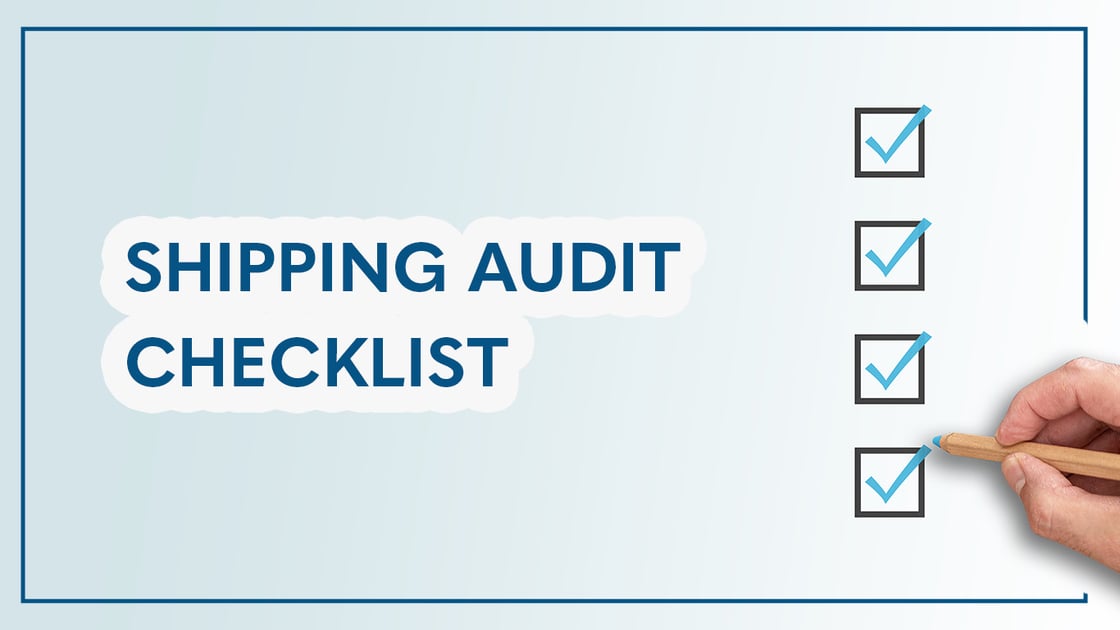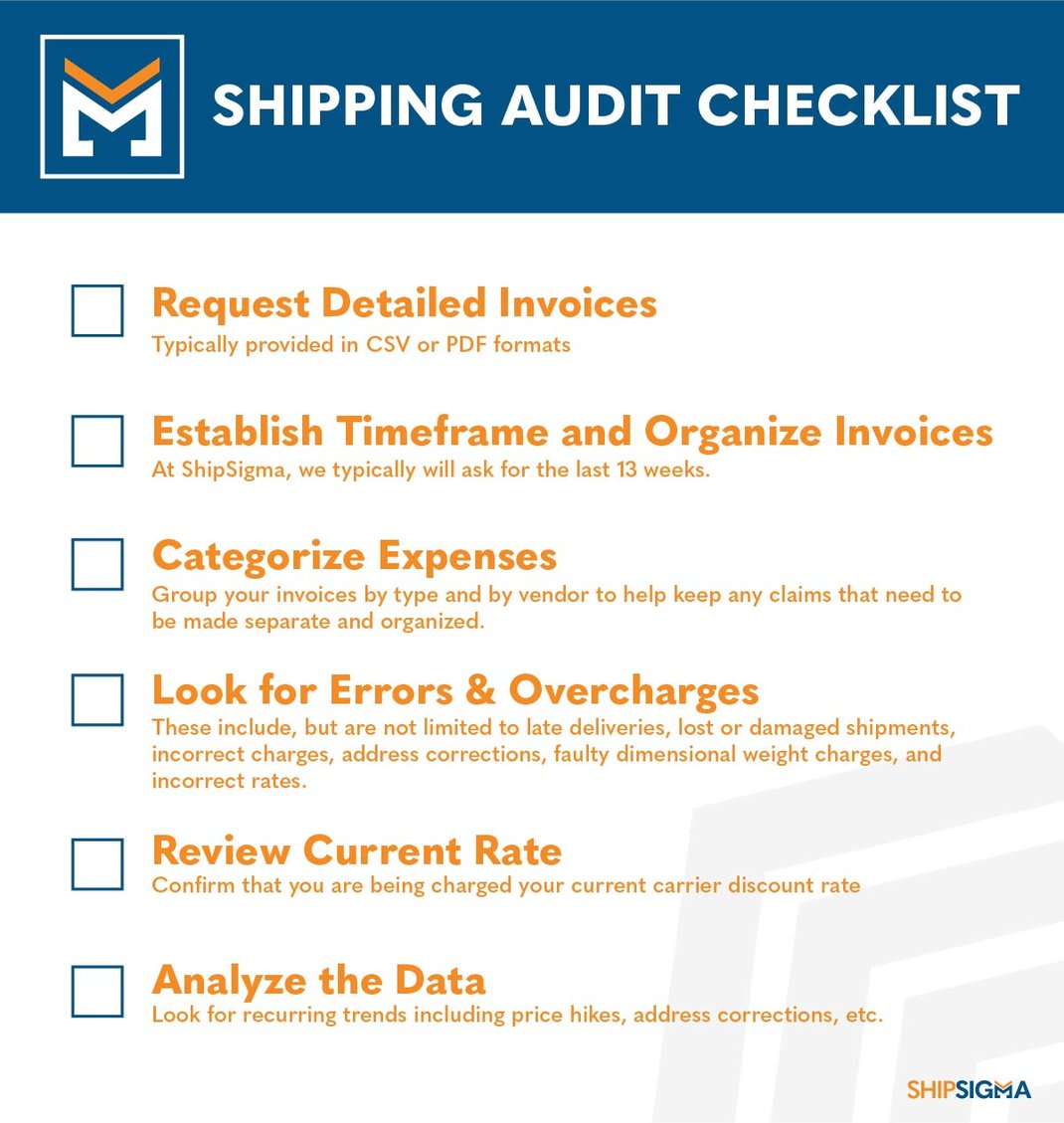Shipping Audit Checklist
April 12, 2022 •Chase Flashman

Shipping Audit Checklist
For companies that ship a significant amount of parcels each year, getting the most out of shipping costs should be a top priority. Ensuring their accuracy can save companies money in the short- and long-term—maximizing profits and revenue.
But how do you optimize shipping costs? Along with carrier contract negotiations, performing a parcel invoice audit or a shipping audit at regular intervals is an excellent way to minimize shipping costs. But what is a shipping audit, and what should be included in a checklist to ensure thoroughness and accuracy? Let’s get started.
What Is a Shipping Audit?
A shipping audit is the process of checking, analyzing, and validating each one of a company’s shipping bills and invoices for information related to overcharging, service failures, and other errors in the shipping process. Regularly performing parcel audits can help companies minimize their overall shipping costs and increase company revenue. When performing such an audit, companies should look for the following:
- Late Deliveries: Carriers like UPS and Fedex offer service guarantees and set delivery dates. Anytime a package is delivered late, companies may be eligible to file a claim.
- Damaged Shipments: Any shipments that arrive damaged may be eligible for a claim.
- Lost Shipments: Shipments marked as “lost” may be eligible for a claim.
Duplicate Charges: While most billing charges are automated, mistakes do still happen. Any audit should include checking for duplicate charges. - Incorrect Charges: Keep an eye out for surcharges associated with deliveries that were incorrectly marked as residential but should have been marked as commercial.
- Address Corrections: Shipping carriers may charge for address corrections (such as an incorrect zip code or apartment number). Analyze invoices for any address corrections. Ensure the address corrections were necessary. If they were not, companies may be eligible to file a claim. If the address is a recurring shipment, update it to avoid correction charges in the future.
- Faulty Dimensional Weight Charges: Companies should ensure that the appropriate dimensional weight of each of its parcels is charged appropriately. This includes both weight and dimensions.
- Incorrect Rates: Check to ensure the appropriate carrier discount—as per the company agreement—was applied to each shipment.
While there are other discrepancies that may appear on a shipping invoice, such as additional handling charges, area surcharges, or fuel charges, the list above should provide a wealth of data and information for companies to optimize their shipping costs. At ShipSigma, our Parcel Invoice Audit & Reporting platform can automatically identify invalid charges and put money right back into your company’s profit–all with no long-term commitment required!
What Is an Audit Checklist for Shipping?
When preparing for and performing a shipping audit, it can be helpful to have a shipping audit checklist to ensure consistent and accurate auditing. Simply put, an audit checklist is a list of activities and tasks that must be performed during each audit.
How do you create an audit checklist for shipping? Simply use information below to build an audit checklist template that can ensure shipping audits are performed consistently.
Step 1: Request Detailed Invoices
If you don’t already, it’s critical to have detailed invoices when performing a shipping audit. Carriers will typically offer these in CSV or PDF formats.
Step 2: Establish a Timeframe and Organize Invoices
Next, gather the necessary information and determine the timeframe you will audit. For example, you may look at invoices from the past three or six months.
Step 3: Categorize the Expenses
Before beginning the audit, group your invoices by type and by vendor so you can keep any claims that need to be made separate and organized. You may also find it helpful to sort the invoices by date.
Step 4: Look for Errors or Overcharges
Using the list above, look for errors or overcharges on each invoice.
Step 5: Review Your Current Rate
After checking for errors and overcharges, you should also check to ensure that you are being charged your current carrier discount rate.
Step 6: Analyze the Data
In addition to any errors or overcharges, companies may also use a shipping audit to analyze the data for any consistent trends. Are you noticing price hikes? Regular address corrections? Do shipping costs seem to be trending upward? Any of this information may be used in future carrier contract negotiations.

Optimize Your Shipping with ShipSigma
Does the above sound like an arduous and time-consuming process? Are you quickly finding that manual shipping audits aren’t returning the results you want? Try out ShipSigma. We started our company to help businesses save money.
Our AI-powered parcel invoice audit platform automatically scans your UPS and Fedex invoices and performs a 50+ point audit. Then, it automatically files carrier claims to save you money every week. We believe in our platform, and we know you will, too. In fact, try it out for free to start seeing results and saving money.

